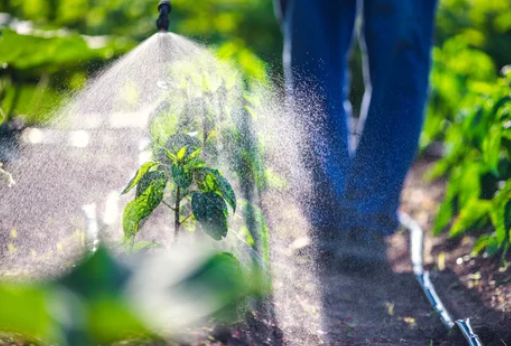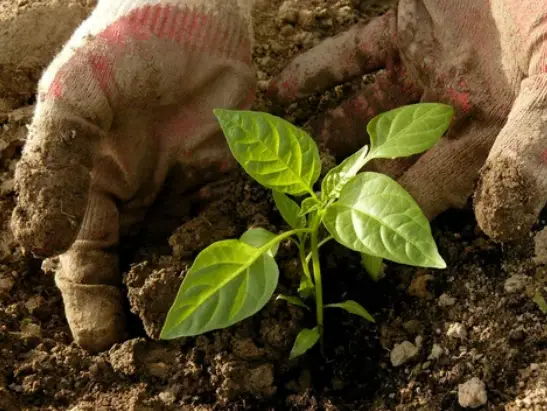Pepper plants are a popular and flavorful spice to any home garden.
Whether you prefer sweet bell peppers or spicy chili peppers, these versatile plants can be grown easily in most climates and provide a bountiful harvest.
With proper care and attention, you can enjoy fresh, delicious peppers all season long.
This guide will provide you with essential information on planting, caring for, and harvesting your pepper plants, so that you can grow a successful crop and enjoy the fruits of your labor.
Site Selection and Preparation for Peppers

When selecting a site for your pepper plants, choose an area with well-drained soil and plenty of sunlight. Peppers need at least six hours of direct sunlight per day to grow well. Before planting, prepare the soil by adding compost or well-rotted manure and a balanced fertilizer.
Variety Selection
There is a wide variety of pepper plants available, ranging from sweet to hot and everything in between. Consider the size of the mature plant, the amount of fruit it produces, and the heat level when selecting a variety.
Planting
Pepper seeds should be planted indoors 6-8 weeks before the last expected frost. When planting the seedlings outdoors, be sure to space them 18-24 inches apart. They can also be planted directly into the garden if the soil is warm enough and all danger of frost has passed.
Watering and Fertilizing

Pepper plants require regular watering, especially when the fruit is forming. Make should also make sure to keep the soil evenly moist but not too waterlogged. Fertilize every 2-4 weeks with a balanced fertilizer to support healthy growth.
Pruning and Staking
Pepper plants benefit from regular pruning to encourage branching and fruiting. Pinch back the growing tip of each stem to encourage branching and remove any yellow or damaged leaves. Staking the plants is also recommended to keep the fruit from touching the ground and to prevent the plant from falling over.
Harvesting
Peppers can be harvested when they are fully grown and have reached their desired color. They can be picked by hand or cut from the plant with a sharp knife. Store harvested peppers in a cool, dry place.
fertilizing practices, maintaining adequate spacing between plants to ensure good air circulation, and using disease-resistant varieties. If a disease is present, removing and disposing of infected plant material and applying appropriate fungicides can help control its spread.
Common Pests
Aphids, whiteflies, and spider mites are some of the most common pests that attack pepper plants. Preventing and controlling these pests involves monitoring your plants regularly and taking action promptly if any pests are detected.
Physical removal of pests and their eggs, as well as the use of natural predators such as ladybugs, can be effective in controlling pest populations. Pesticides can also be used, but it is important to choose ones that are safe for use on food crops and to follow the manufacturer’s instructions carefully.
Organic Methods
For those who prefer organic methods, there are a variety of ways to prevent and control diseases and pests on pepper plants. These methods include using companion planting with herbs such as basil and marigolds, using natural insecticides made from soap or vinegar, and utilizing beneficial insects such as lacewings or parasitic wasps.
Caring for Your Pepper Plants Throughout the Growing Season

Mulching
Mulching around the base of your pepper plants can help conserve moisture, regulate soil temperature, and suppress weed growth. Use a layer of organic mulch, such as shredded leaves or straw, to help maintain a consistent soil moisture level and prevent water evaporation.
Supporting the Fruit
As the fruit of your pepper plants begins to form and mature, it is important to provide adequate support to prevent damage. Use a stake or cage to keep the fruit off the ground and prevent it from breaking or rotting.
Pinching and Training
Pinching and training your pepper plants can help encourage branching and increase fruit production. Pinch back the growing tip of each stem to promote branching, and use string or ties to support the stems as needed.
Handling Hot Peppers
If you are growing hot peppers, it is important to handle them with care to avoid skin irritation or other discomforts. Wear gloves and wash your hands thoroughly after handling hot peppers to prevent any accidental exposure.
Storing Your Peppers
Proper storage techniques will help to extend the shelf life of your peppers and ensure that you can enjoy them for several months to come.
Determining Ripeness
Peppers will change color as they mature, from green to yellow, orange, or red depending on the variety. The specific color and size will vary for each type of pepper, so it is important to consult a reference guide or the seed packet for specific ripening information.
Picking the Peppers
Use clean, sharp scissors or pruning shears to cut the peppers from the plant, leaving a short stem attached to the fruit. Be careful not to damage the plant or surrounding fruit while harvesting.
Storing Peppers
Peppers can be stored in the refrigerator for several days to a week, or they can be frozen for longer storage. To freeze peppers, wash and dry them thoroughly, remove the stem and seeds, and slice or chop as desired. Place the prepared peppers in a single layer on a baking sheet and freeze until solid. Once frozen, transfer the peppers to an airtight container or freezer bag for longer-term storage.
Conclusion
With proper care and attention, pepper plants can be an abundant and enjoyable addition to your garden. Understanding common diseases and pests and taking steps to prevent and control them will help ensure a successful crop. Whether you prefer organic methods or conventional methods, there are many options available for a healthy and fruitful pepper garden.
Recommendations
- Choose a suitable planting site: Select a location with well-draining soil, full sun exposure, and adequate space for your pepper plants to grow.
- Start with healthy plants: Purchase strong, healthy seedlings or young plants from a reputable garden center or nursery.
- Provide proper water and nutrition: Pepper plants require consistent moisture and fertilization throughout the growing season. Water regularly and fertilize according to the needs of your specific plants.
- Protect from pests and disease: Regularly inspect your pepper plants for signs of pests or disease, and take action to control or prevent outbreaks as needed.
- Support fruit production: Provide adequate support for the fruit of your pepper plants as they form and mature to prevent damage.
- Store peppers properly: Harvest and store your peppers correctly to extend their shelf life and ensure maximum flavor and quality.
- Experiment with different varieties: There are many different types of peppers to choose from, so consider trying several different varieties to find your favorite flavor and heat level.
References
- Pepper Growing Guide. The University of Maryland Extension. https://extension.umd.edu/hgic/topics/pepper-growing-guide
- Pepper: Planting, Growing, and Harvesting Pepper Plants. The Old Farmer’s Almanac. https://www.almanac.com/plant/peppers
- Peppers: A Guide to Growing Peppers in the Home Garden. Cornell Cooperative Extension. https://www.gardening.cornell.edu/homegardening/scene9076.html
- Growing Peppers: How to Plant, Grow, and Harvest Peppers. Better Homes & Gardens. https://www.bhg.com/gardening/vegetable/vegetables/growing-peppers/
- Peppers: Tips for Planting, Growing, and Harvesting Peppers. Gardener’s Path. https://gardenerspath.com/plants/vegetables/growing-peppers/
Note: The information provided in this blog post is based on the latest knowledge available at the time of writing and may be subject to change as new information becomes available. It is important to always consult reliable and up-to-date resources for the most accurate information.


